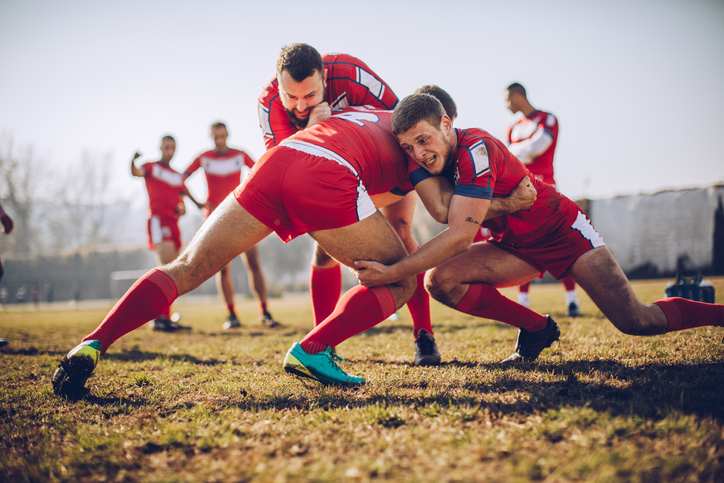Rugby World Cup – be as fit as the world’s best!
The 3rd biggest sporting event in the world is upon us! 20 Nations representing the best Rugby union players on the planet, coming together to challenge for the title of the World Champions and lift the Webb Ellis Cup. It promises to be a thrilling spectacle showcasing the epitome of human performance – combining strength, speed, skill and teamwork.
In this blog Richard Game talks about how the game has changed and how this has increased the demand for excellent rehab and strength and conditioning training allowing players to be pro-active in their injury prevention.
How has the game changed?
The incredible physicality of the modern professional game has completely changed the way professional players train and this has, in turn, changed the way amateur players train – from seasoned veterans playing social rugby, to aspiring school boys and girls and youth club players.
As training methods have developed and become more sophisticated so the players have become faster and stronger so the demands of the game have heightened.
How does this affect our Physiotherapy treatment approach?
This also changes the way we, as physiotherapists, work. We must ensure players are in the best condition to avoid injuries. Should they be unlucky enough to sustain an injury we need to rehabilitate them to a high standard and get them back to the game quickly.
Injuries are an almost inevitable aspect of the modern game but we can play our part in minimising the risks and helping with recovery.
What can be done to prevent injuries?
Being prepared physically and mentally is essential to optimise performance AND to minimise injuries.
Rugby’s demands on the body are significant. As well as perfecting the technical aspects of the game such as tackling, passing, rucking, scrummaging and line-outs, training should focus on all other aspects such as strength, speed, skill, co-ordination and teamwork.
What can you do to help with your preparation?
To encourage this, we present here some rugby specific exercises. These can be done in the gym, at a park or in your own home and can be done with very little equipment.
Warming up is essential – jogging, step ups, shoulder circles, cycling, jumping jacks are all good movements to warm up and this should be for about 10 minutes. Following a warm up, do a circuit of the exercises below, aiming for 1 minute of each exercise with a 15 second rest. Build up to 2 circuits when the 1 circuit is readily achievable.
Bear Crawl
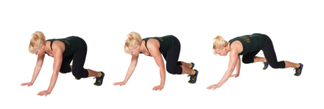 Embrace that inner grizzly. Starting on your hands and knees, rise up onto your toes, tighten your core by drawing in your lower abdominals, and slowly reach forward with the right arm and right knee, followed by the left side. Continue the crawl for 8-10 reps. This is great for core and shoulder strength.
Embrace that inner grizzly. Starting on your hands and knees, rise up onto your toes, tighten your core by drawing in your lower abdominals, and slowly reach forward with the right arm and right knee, followed by the left side. Continue the crawl for 8-10 reps. This is great for core and shoulder strength.
Lying Prone to standing up exercise
Getting off the floor at speed is imperative in rugby. Lying face down with hands off the floor, move to a standing position as quickly as you can. Lay down again at an easy pace and repeat the rapid move to standing.
Alternate leg lunge and twist
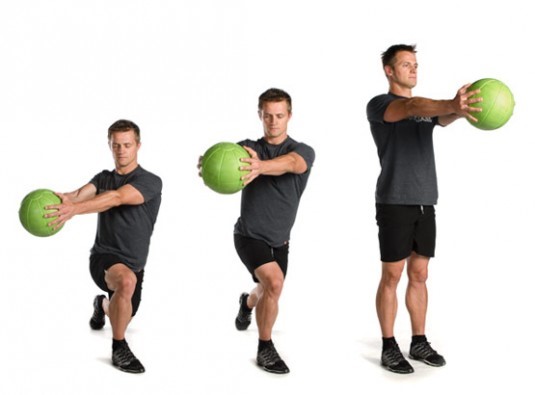 Holding a rugby ball out in front at chest height, lunge one foot forwards at the same time twisting to the same side as the front leg. Alternate this movement to each side.
Holding a rugby ball out in front at chest height, lunge one foot forwards at the same time twisting to the same side as the front leg. Alternate this movement to each side.
Twisting jump with rugby ball
Hold a rugby ball in both hands and jog on the spot with high knees. Jump and twist 90 degrees, planting feet in a squat, then jump again twisting to start position and continue to jog with high knees before repeating to the other side.
Press up to side plank
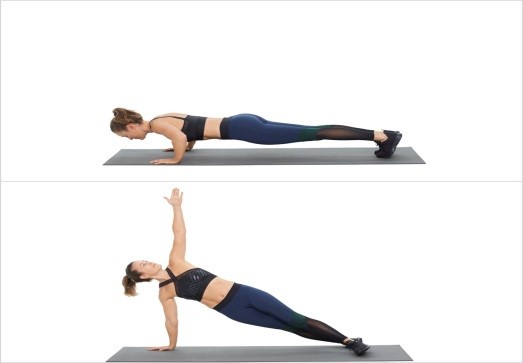 This exercise makes you work on pushing and twisting – movements essential for rucking, running and effective hand offs.
This exercise makes you work on pushing and twisting – movements essential for rucking, running and effective hand offs.
Sumo Squat
Squatting is a ‘go to’ exercise to work the engine room for rugby which is the lower limb muscles.
Sumo squats are with the legs wider than normal and feet at 10 o’clock and 2 o’clock. Squat down as low as possible keeping the knees wide and in line with the feet whilst pushing the bottom back.
Horizontal pull ups
Using a table edge, banister ends or breakfast bar, lay face up in an inverted press up position. Grasp the bar or table end and, pivoting on your feet, pull your chest up towards your hands.
This is fantastic for upper body strength.
Pistol squat
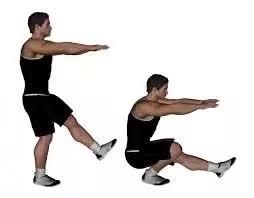 Working strength and balance, this is a controlled exercise. Stand on 1 leg and squat low, getting your bottom towards your heel with the other leg staying straight out in front and the foot just above the floor throughout.
Working strength and balance, this is a controlled exercise. Stand on 1 leg and squat low, getting your bottom towards your heel with the other leg staying straight out in front and the foot just above the floor throughout.
Resistance band 1 arm row
Face a solid safe object like a tree, heavy table leg or strong door handle. Secure a resistance band to the object at waist height. Hold the other end of the band and starting with your arm straight and the band just taut, pull your hand back to level with your chest, twisting your hips as you do so to extend the range of movement.
Crab walking
 With a resistance band tied around your lower thighs, lower to a ¼ squat with feet shoulder width apart and side step to one side, keeping feet shoulder width apart or wider at all times.
With a resistance band tied around your lower thighs, lower to a ¼ squat with feet shoulder width apart and side step to one side, keeping feet shoulder width apart or wider at all times.
How we can help you further
These exercises are not intended to be a solution to any injury you have sustained. They are intended to help you increase your fitness and strength for rugby to do alongside your normal training.
Here at Physio on the River, we have highly skilled clinicians with a wealth of experience in all sports. If you are unlucky enough to become injured come and see one of our team.
The boundaries between rehabilitation, prehabilitation and strength and conditioning are becoming less marked with time and today, the players going into this World cup are all involved in significant amounts of conditioning as well as Rugby specific training.
Richard Game and Dave Burnett, two of our Physio team, both have experience and skills to help you with your strength and conditioning needs. If you would like more help getting fit for the game, come and do a one to one session of personal training with either one or if you are not sure it’s right for you give us a call and we can advise you.
Prevention is always better than cure!
Our Physios can assess your particular needs and put together a properly tailored programme of exercises specifically for you. The advantage of seeing one of our physios is that if you have had previous injuries, they will have an in depth knowledge of your condition and will be able to include exercises to prevent against re-injury.
Next steps
If you would like an appointment for Physiotherapy or Personal Training with one of our physios:
Call the clinic on 020 8876 5690
Email us here
Or just simply pop in for a chat!


